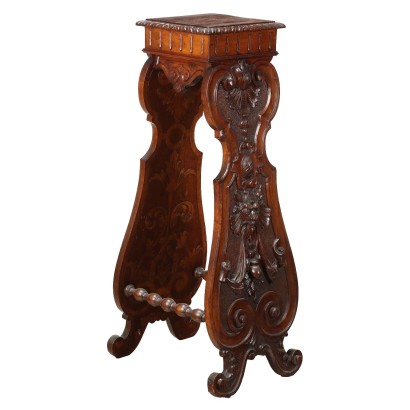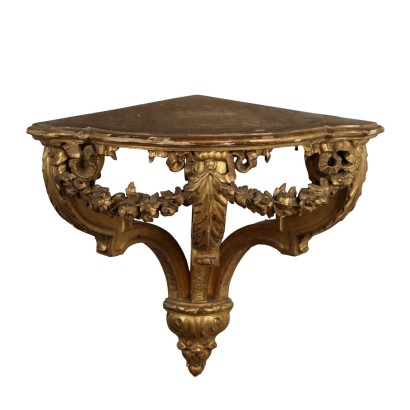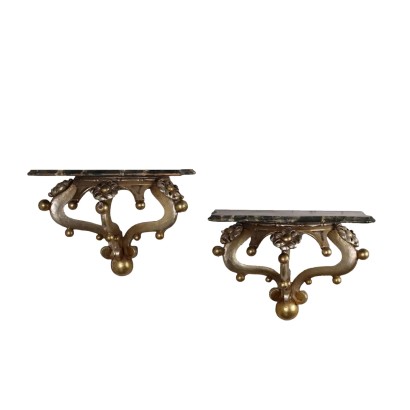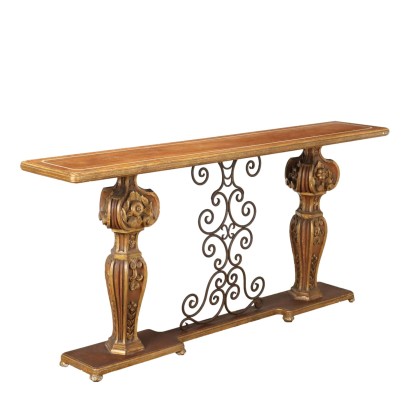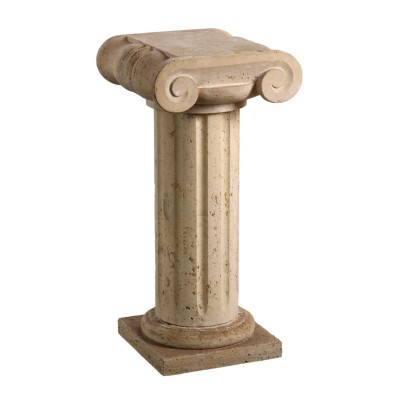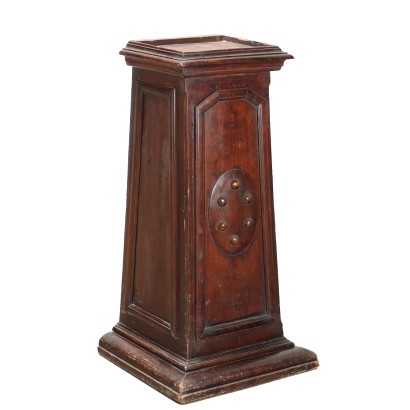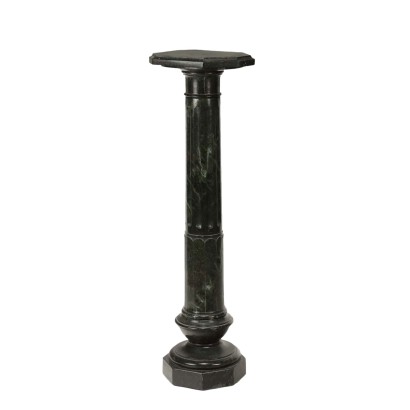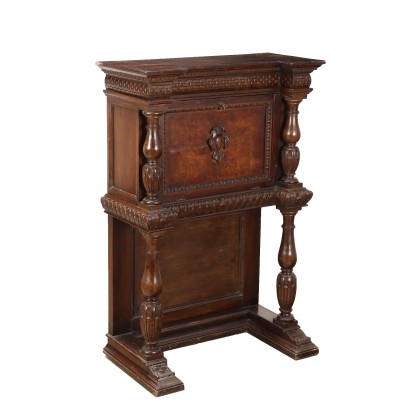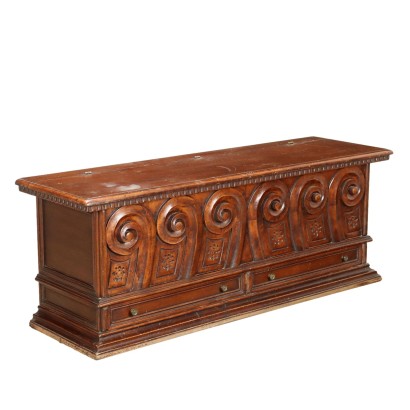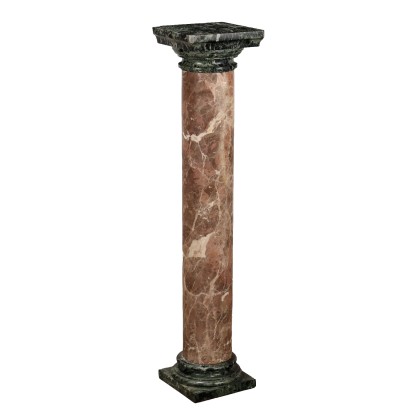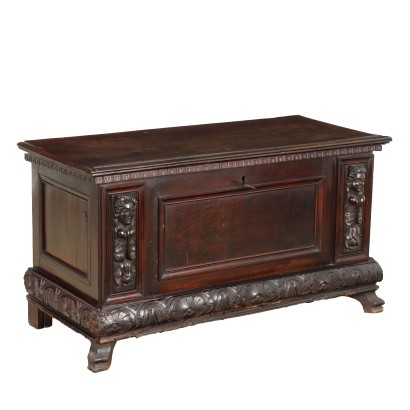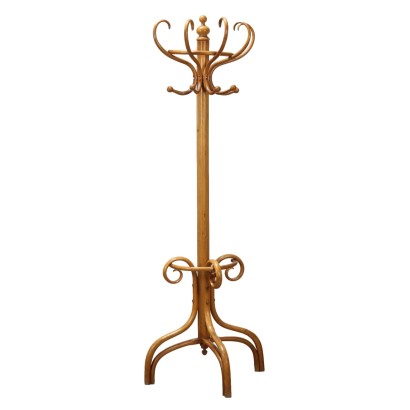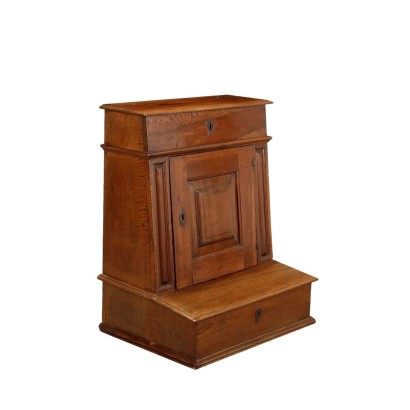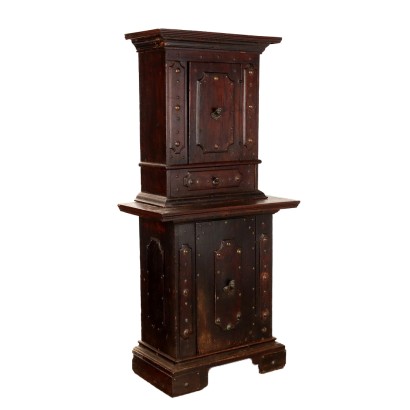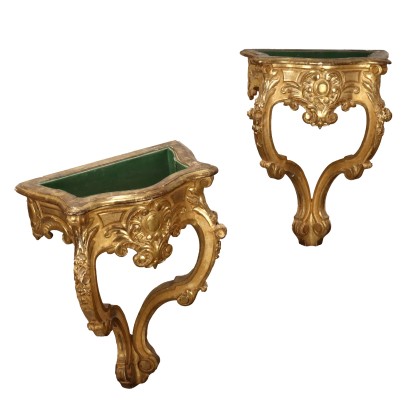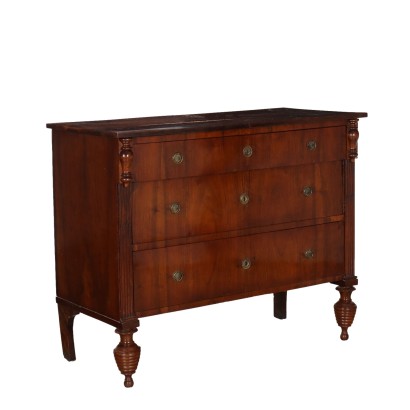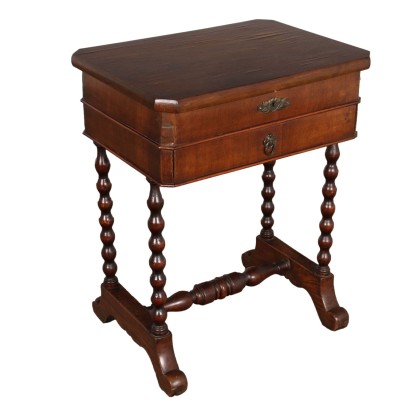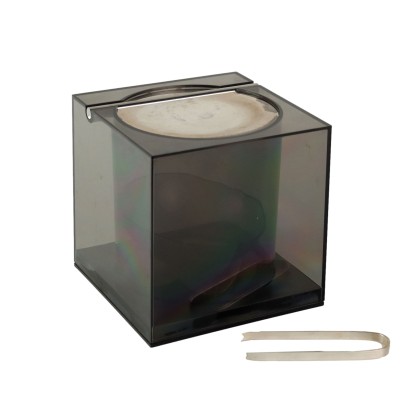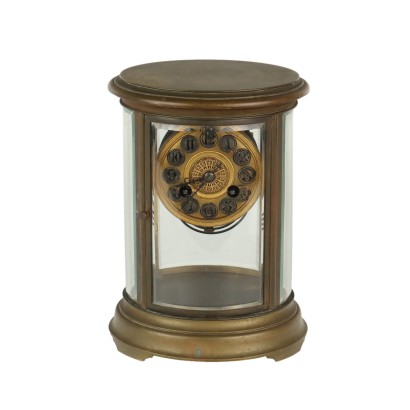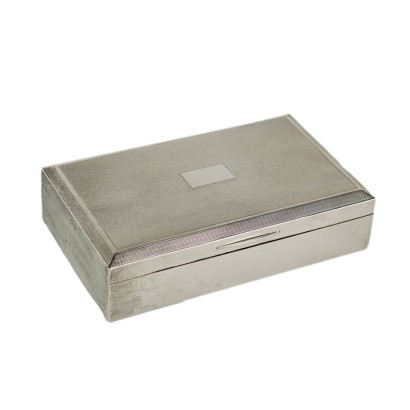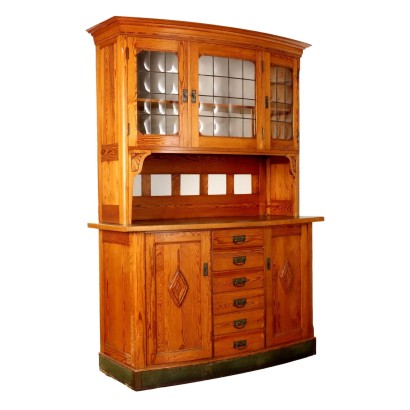Ancient Neo-Baroque Stool Italy Second Half XIX Century - Italy, Second Half XIX Century
Features
Italy, Second Half XIX Century
Style: Neo-Baroque (1860-1890)
Age: 19th Century / 1801 - 1900
Origin: Italy
Main essence: Walnut
Description
Walnut wall stool richly carved on the front to depict a mask and central coat of arms within scrolls. Turned connecting crosspieces and curled feet. Italy second half of the 19th century
Product Condition:
Product which due to age and wear requires restoration and re-polishing. We try to present the real state of the furniture as completely as possible with photos. If some details are not clear from the photos, what is stated in the description applies.
Dimensions (cm):
Height: 106
Width: 38
Depth: 48
Additional Information
Style: Neo-Baroque (1860-1890)
Anticipated in England in the first half of the 19th century on the reminiscences of the Elizabethan style, it came back into fashion around 1870, but interpreted in a very free way.It initially represents a response to the frivolity of neo-Rococo, but soon lapses into a pompous and eclectic style that combines severe sixteenth-century elements with sculptural decorations from the early 17th century.
The furniture is solid, richly carved and carved, in dark patina wood.
Garnets, frames, columns carved with herms that make up architectural structures typical of Renaissance palaces, are the elements that characterize the neo-Renaissance style.
It was an era in which we saw the revival and re-proposal of ancient forms with a typically Renaissance taste, large carvings were used for a more complete, deeper and three-dimensional vision, the use of animal paws in chests and wardrobes, squares and moldings, frames, bossages and claws, Romanesque ornamental motifs but also acanthus leaves, cartouches and lion heads.
Often in this period, furniture was built using ancient materials and parts of Renaissance furniture.
Walnut was often used but also less hard essences such as poplar or others since they were often darkened and presented in black.
Find out more with the insights of our blog:
The Neobaroque in a large 19th century table
INSERT ADDITIONAL LINKS
Austrian taste for Baroque
Rococo style in Italy
The Renaissance and its impact on design
Age: 19th Century / 1801 - 1900
19th Century / 1801 - 1900Main essence: Walnut
Walnut wood comes from the plant whose botanical name is juglans regia , probably originally from the East but very common in Europe. Light or dark brown in color, it is a hard wood with a beautiful grain, widely used in antique furniture. It was the main essence in Italy throughout the Renaissance and later had a good diffusion in Europe, especially in England, until the advent of mahogany. It was used for solid wood furniture and sometimes carvings and inlays, its only big limitation is that it suffers a lot from woodworm. In France it was widely used more than anything else in the provinces. In the second half of the eighteenth century its use decreased significantly because mahogany and other exotic woods were preferred.Other customers have searched:
Altri mobili antichi, toilette antica, inginocchiatoio antico, baule antico, inginocchiatoio, mobili antiquariato, mobili antichi, bauli, cassapanca..
Se ti interessano i mobili d'antiquariato Scopri qui tutte le presentazioni dei prodotti d'antiquariato più belli, eleganti e preziosi su FineArt by Di Mano In Mano
Leggi di più
Sull'antiquariato in generale dai un'occhiata anche a:
Antiquariato: una sezione per raccontare i mobili antichi che sono arrivati fino ai giorni nostri.
Classic Monday: da un pezzo dei nostri magazzini alla storia dell'antiquariato
L'antiquariato dalla A alla Z: il Dizionario dell'Antiquariato
Il dizionario dell'antiquariato - Lastronatura
Il dizionario dell'antiquariato - Mascherone
Il dizionario dell'antiquariato - Natura morta
Il dizionario dell'antiquariato - Opificio
Il dizionario dell'antiquariato - Pastiglia
Il dizionario dell'antiquariato - Savonarola
Il dizionario dell'antiquariato - Rosone
Intaglio barocco con motivo a ricciolo
Infine, dai un'occhiata alle nostre rubriche di divulgazione sulla storia delle arti decorative e d'arredo:
Epoche
Lavorazioni e tecniche
Mostre ed Eventi
Protagonisti
Leggi di più
Sull'antiquariato in generale dai un'occhiata anche a:Antiquariato: una sezione per raccontare i mobili antichi che sono arrivati fino ai giorni nostri.
Classic Monday: da un pezzo dei nostri magazzini alla storia dell'antiquariato
L'antiquariato dalla A alla Z: il Dizionario dell'Antiquariato
Il dizionario dell'antiquariato - Lastronatura
Il dizionario dell'antiquariato - Mascherone
Il dizionario dell'antiquariato - Natura morta
Il dizionario dell'antiquariato - Opificio
Il dizionario dell'antiquariato - Pastiglia
Il dizionario dell'antiquariato - Savonarola
Il dizionario dell'antiquariato - Rosone
Intaglio barocco con motivo a ricciolo
Infine, dai un'occhiata alle nostre rubriche di divulgazione sulla storia delle arti decorative e d'arredo:
Epoche
Lavorazioni e tecniche
Mostre ed Eventi
Protagonisti
Product availability
The product can be seen at Milan
Immediate availability
Ready for delivery within 2 working days from ordering the product.



